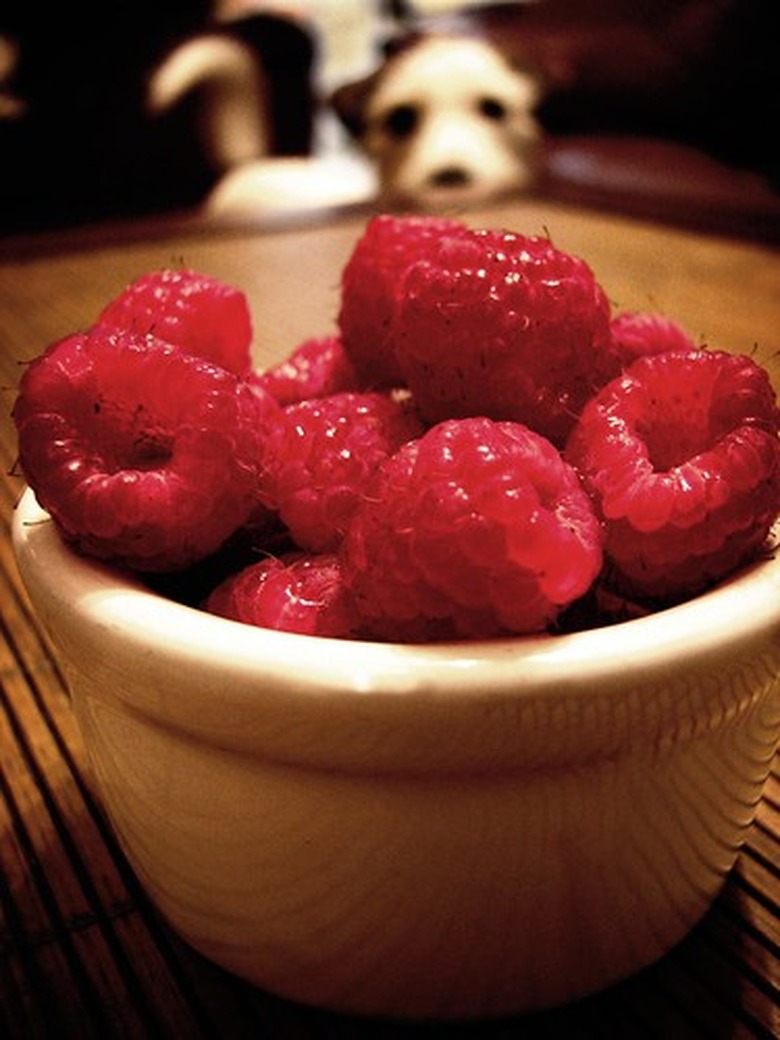Herbicide For Raspberries
Raspberries are increasing in popularity. New cultivation, harvesting and delivery practices mean this tender fruit can now be found more often in stores. New varieties are also making raspberries more attractive for raising at home. But weed control can be a problem in raspberry plantings. Thick brambles and painful thorns make hand or mechanical weeding difficult. When properly applied, the right herbicides are a good alternative.
Pre-Establishment Application
Prior to establishing raspberry beds, the herbicide should be applied to the soil to eliminate weeds, especially perennials. This will help prevent regrowth of plants from roots that may have been created during cultivation.
- Raspberries are increasing in popularity.
- But weed control can be a problem in raspberry plantings.
Broad-Spectrum Herbicides
Use glyphosate, commonly sold under the brand name Roundup, as a broad-spectrum herbicide before raspberry plantings are established. It is effective against a wide range of both annual and perennial plants. The short life span of glyphosate allows for plantings within days after treating the area with the herbicide.
Pre-Emergent Application
Once raspberry plants are established, apply a pre-emergent herbicide. This prevents weeds from growing around the raspberry canes. The three most popular pre-emergent herbicides are diuron, simazine and pryzalin. All of these herbicides are effective on a wide range of broad-leaf weeds and grasses.
- Use glyphosate, commonly sold under the brand name Roundup, as a broad-spectrum herbicide before raspberry plantings are established.
- The short life span of glyphosate allows for plantings within days after treating the area with the herbicide.
Pre-Emergent Herbicides
Diuron, sold under the brand name Karmex DF and Direx 80DF, is a pre-emergent herbicide; apply it as a single application in winter or as two applications in spring and fall. Simazine is available under the brand name Princep. Apply this herbicide in the same manner as Diuron; use it with Diuron to avoid shifts in weed emergence. Oryzalin, commonly call Surflan, can be applied to the raspberry rows in late fall, although an early spring application is preferred, just prior to weed emergence.
Other pre-emergent herbicides you can use with raspberries include norflurazonsold, (known as Solicam); napropamide (commercially available as Devrinol); dichlobenil (brand name Casoron); and Terbacil (commonly called Sinbar).
Post-Emergent Application
Post-emergent herbicides help to control weeds once they have begun to grow. This can help rows remain clear of weeds that may become established during the growing season, particularly broad-leaf weeds and grasses. Take care when applying these to prevent possible damage to the raspberry canes from excessive exposure.
- Diuron, sold under the brand name Karmex DF and Direx 80DF, is a pre-emergent herbicide; apply it as a single application in winter or as two applications in spring and fall.
- Oryzalin, commonly call Surflan, can be applied to the raspberry rows in late fall, although an early spring application is preferred, just prior to weed emergence.
Post-Emergent Herbicides
Apply paraquat, sold under the brand name Gramoxone Extra, to post-emergent weeds before the raspberry canes emerge in the spring. Apply sethoxydim, known by the trade name Poast, during the growing season to control grasses. Use pronamide, known commercially as Kerb, in the fall for grass control.
